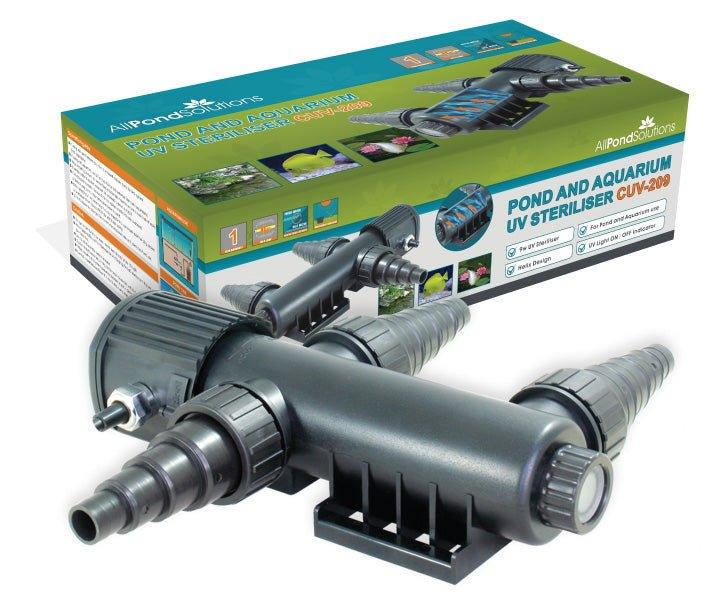Pond filters essential for clear healthy ponds
In the world of aquatics sometimes the sheer amount of pond filters out there can bamboozle and confuse in an attempt to give us a wide range of options. We are here to break down each type of pond filter and explain which pond it is suitable for in addition to the pro's and con's of that specific type to help you feel less overwhelmed.
The Different Pond Filters Available:
The best response is that in the majority of cases the best filter to use is often circumstantial and varies greatly depending on your needs. In this post, we hope to broaden your knowledge of the different systems available and hopefully provide a clearer view of which system is best for you!
Ultra Violet
Having green water issues? This is what you need. Fortunately, almost all systems now come with UV bulbs fitted to them now. But what do these do? By exposing suspended algae, bacteria and parasites to these bulbs you damage their cell structure and kill them off. It must be careful to note there is a difference between UV Clarifiers and UV Sterilisers. Clarifiers have limited exposure times to the water column and will only control green water problems. Sterilisers, however, have an extended exposure time to the water column and can control tougher bacteria and lesser parasites.
UV’s should always be placed at prior to the filter mass so that any dead matter can be collected by the filter media rather than being sent straight back into the main body of water which would be the case if placed on the exit of the filter.
All in one
These are ideal for the smaller pond. Available in a range of sizes, these filters can do up to 2000 litre ponds with a light stocking of fish (excluding koi). All in one filters often provide mechanical and biological filtration, with added UV to help control green water. Their available surface area on which to grow bacteria is limited, hence only light stocking and they require regular maintenance to prevent clogging which can impede their performance. All of them can be used to power either a fountain or a small waterfall. However it is worth reminding as with all pumps if you use the waterfall feature you will lose a degree of water flow under the pressure of the height being pumped.
Box
The oldest and most well-known style of filters, these are very simple to use and maintain, although they can be a bit messy (But that’s half the fun isn’t it?). Care must be taken with these box pond filters when accompanied by pumps, if the pump is too highly rated it can flood the box and cause overflow issues (emptying your pond in the process). These pumps must be placed in a gravity feed position at the highest water level, this is generally either at the top of the waterfall or the side of the pond (if no waterfall present). Filters such as these will generally consist of a set of sponges on the inlet after passing through a rear mounted UV system before finally passing through some bio media (Alfagrog/Bio Balls/K1) it will then exit the return back into your pond.
Koi Box
These are very similar to your standard box filters, with the exception that these are generally able to be modified. By having multiple chambers these can be easily adjusted to suite 10/15/20k litre ponds. Because of the nature of being modifiable these are not always sold with UV kits or pumps, however, rating the products to the filters are easily done to achieve maximum filtration. Find out more about our koi box filter systems
Pressurised
Of all the types of filtration, the most popular coming to the foreground of the industry in the past 5 years is the pressurised canisters. With prices dropping to a point where they are often a good match for competition against the old favourite box filters.
Pressurised pond filters that can be partially submerged so that the bucket sits in the ground leaving just the head component exposed. More often than not they come equipped with a backwash system for easy cleaning along with some sort of sponge compression to allow for easy cleaning without having to get the head off the unit and spreading the sponges and getting all messy.
One of the main advantages of these filters is that they can be placed below the main body of water without detriment to the filter performance. This means they can also be used to power a waterfall without having to have the filter at the top of the waterfall (as is the case for box filter systems).
